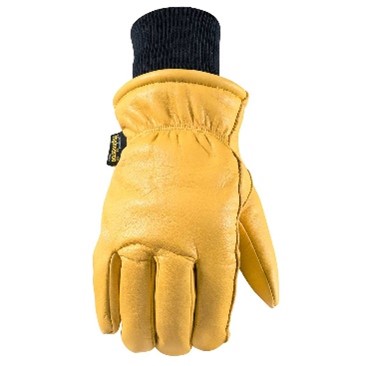Now that winter weather is upon us and temperatures routinely dip below freezing, it’s a good time to review the best practices for winter Personal Protective Equipment (PPE). PPE is often viewed as a last resort when it comes to employee safety, but it is perhaps the most essential.
Personal Protective Equipment (PPE). PPE is often viewed as a last resort when it comes to employee safety, but it is perhaps the most essential.
During cold weather, PPE should be designed to be warm and protective without compromising flexibility and comfort. PPE for the winter months should include:
- Insulated gloves – protects against frostbite which can affect areas with limited blood circulation, such as the fingers, toes, nose and ears. Insulated gloves are a critical part of winter PPE, balancing protection, flexibility and dexterity even at very low temperatures. Gloves should be soft and layered on the inside with a sturdy, weather-proof exterior to prevent injury against moisture, cold and impact. Gloves also need to provide a firm, safe grip on equipment which is likely to be cold, frozen, icy and slick.
- Outerwear – The best option here is for layered clothing, with the inner-most layer providing insulation and moisture-wicking properties to move sweat away from the skin. Additional layers add to the insulation factor, and an outer shell that is wind and moisture resistant is important. Outer layers that do not absorb moisture work best to keep the weight of the garment down. Inner layers also add comfort and flexibility as they can be removed should the weather or work conditions permit.
- UV eye protection – Do not get fooled by the lack of sun in the winter months. It can be just as strong and damaging as during the summertime and can even reflect off the snow to cause eye damage and discomfort. Wearing properly fitting safety glasses or goggles with UV protection should be required. Working outside on sunny, cold days can still damage the eyes through UV exposure.
- Anti-Slip and Insulated footwear – Safety boots are a commonly worn PPE around the garage area. In the winter, make sure these boots have insulation to keep the feet warm, a sturdy exterior which is water-resistant to keep the feet dry, and a solid sole construction to add grip and stability when negotiating slick walking surfaces. Wearing lined socks made of synthetic material that moves moisture away from the feet, but also provides good insulation can also help if the boot insulation is not adequate on its own. You may want to consider insulated sole inserts that can be removed to reduce moisture contact.
It is important to maintain properly protecting and fitting PPE throughout the year, especially during the winter months when our bodies are not equipped to handle the ice, snow and cold conditions. Remember to wear layers, cover exposed skin, keep hydrated, keep active, and avoid prolonged exposure to severe cold weather.
For additional tips on winter safety, please contact the Director of Loss Control, Robert Blaisdell at This email address is being protected from spambots. You need JavaScript enabled to view it.. Also, check out some PPE safety training videos from Safety Source On-line – ask Robert to provide you with a User ID and Password for access.

